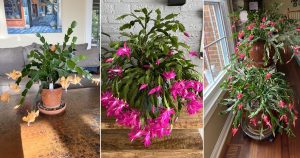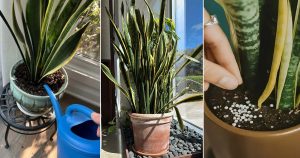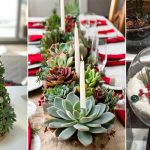Ethylene gas emitted by ripening fruits and your Christmas cactus are not really fond of each other, so do this instead.

Succulents in general and Christmas cactus in particular look adorable when kept around other plants and fruits. But do you know that this might silently kill your Christmas cactus by hampering its growth environment? Read why you should never keep your Christmas cactus near ripening fruits or fruit baskets!
Why You Should Never Keep Your Christmas Cactus Near Ripening Fruits
Ripening fruits release a gas called ethylene that helps them turn soft and sweet. However, for your Christmas cactus, it is not a big deal. Instead, it fear this because even a slight amount can cause it to drop buds or force it to stop blooming, and then turn either tired or weak.
How to Identify This Problem?

Well, if you have placed your Christmas cactus really close to ripening fruits and you see their buds dropping before they open, with wilted flowers or leaves turning yellow, it is time to practice caution since they have been affected by ethylene gas.
Move the fruit bowl from there or shift the plant to a fresh spot with good airflow, away from the kitchen or fruit bowls. Keep it outside for bright sunlight and away from heaters, stoves, or cold drafts, because sudden heat or chills can add to the stress. Avoid watering too much during this time and keep the soil slightly moist, not soggy.
Lightly mist the leaves or run a humidifier around it. This adds gentle humidity and helps the plant reset after the stress. You can even place a few pieces of activated charcoal nearby to absorb leftover ethylene in the air and save your dainty friend.
Other Symptoms
1. The Ethylene Gas Affect
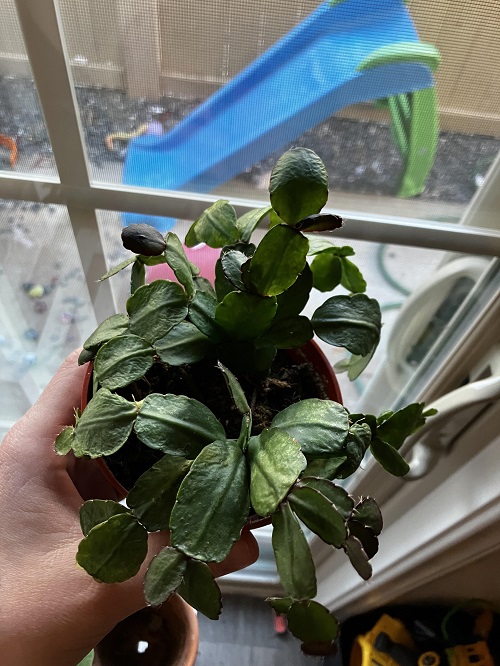
Ripening fruits naturally release ethylene to speed up their own maturation. But this gas does more harm than good to your Christmas cactus. Even small amounts of this gas can send your plant into a stress mode. That is because the gas interferes with the plant’s hormonal balance by hampering the signals that tell buds to develop.
Keep your Christmas cactus at least 8-10 feet away from any ripening fruit bowl or a separate room altogether. If you keep fruits around the countertop, use a ventilated kitchen counter far from your plant display.
A good tip is to avoid keeping the plant anywhere near closed spaces where fruits are stored—like pantry shelves or dining table clusters—because ethylene builds up easily in compact areas.
2. Confusing the Growth Signals
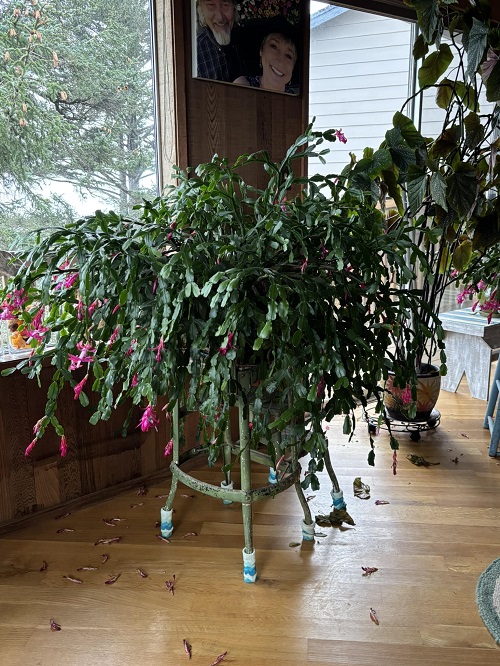
Plants scan the room they live in through chemical cues, and ethylene is the red flag that gives off all the wrong signals. While fruits use ethylene as a cue to trigger ripening, plants like your Christmas cactus can misinterpret it as a cue for aging.
And in the end, you will be left with premature leaf yellowing or slowed growth, just when your cactus should be setting the stage for its big wintery bloom display. Eventually, this can also affect your plant’s ability to recognize day and night cycles.
This confusion can even make your cactus temporarily go “sleepy,” reducing water absorption and slowing down photosynthesis. If you notice dry-looking segments even after watering, ethylene may be the reason.
3. Early Aging and Bud Loss
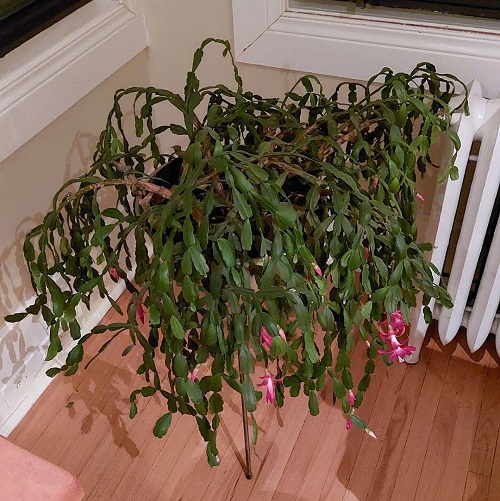
Ethylene gas makes your cactus believe that its flowering phase has finished, and then it will age prematurely. The gas causes the cactus to undergo senescence, so the petals become wilted and the buds fall off, making the cactus look tired and not so bright. This may even delay the next flowering cycles, taking weeks to reset.
If a cactus has been placed close to some ripening fruit and it shows signs of stress, you can help it by transferring it to a cooler, bright place and slightly raising the humidity. This will help fight dehydration and shock, which are caused by ethylene exposure, thus giving your plant some time to rest and regain its strength.
4. Fruit Flies and Mold
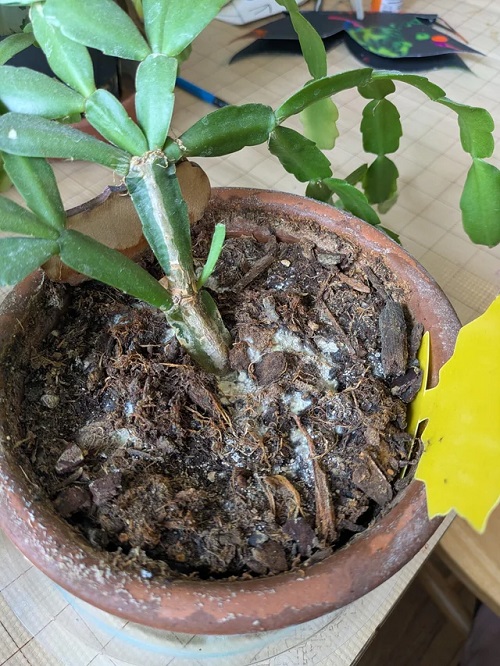
Ripening fruits bring along fruit flies and mold spores that may infect your plant. A fruit fly may lay eggs in the moist soil, leading to fungal diseases and root rot, while a mold spore may find the humid air around your plant a comfortable place to grow, and thus, it will weaken your root system and may cause rot.
Do not give a chance to these pests to harm your cactus, that is why you should not place fruits next to it, mainly if it is in a warm place. The best weapon for the fight is prevention, so be conscious of the danger and take measures to safeguard your plant.
If fruit flies appear, place a small vinegar trap near the fruit bowl—not near the cactus. This keeps pests away from the plant and reduces the chances of larvae landing in the soil.
5. Messed Up Bloom Timing

Christmas cacti love their winter timing to bloom, needing cool temperatures, darkness, and rest. But ethylene gas can disrupt this process, confusing the plant into ending dormancy early or stopping bud formation. This can lead to a non-blooming cactus in December, impacting the actual joy of the plant.
To bring your cactus to its routine, maintain consistent light and temperature regimes. If you wish to move it indoors for winter blooms, provide at least 12 hours of darkness nightly, away from fruit bowls, to preserve its internal clock and ensure those vibrant December blooms.
A small note—refrigerators and fruit-storage drawers also release ethylene when opened. So avoid placing your cactus on top of, or right next to, the fridge to prevent accidental exposure.
What is done is done, but don’t worry! Your cactus will bloom and thrive again; just give it some time and patience to develop healthy buds again. Keep them away from ripening fruits and see how they reward you! Let us know how you managed to save your adorable Christmas cactus in the comments below.



